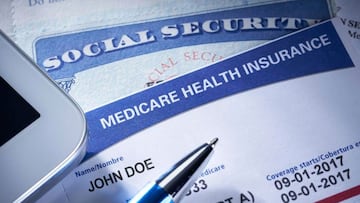What is the lowest and highest income to qualify for Medicaid?
Medicaid provides health coverage to tens of millions of Americans but the income thresholds to participate in the program vary from state to state.

The Affordable Care Act, increased the income thresholds for Medicaid qualification. Recipients of Medicaid support cannot have an income over that threshold, so upping the level made more people eligible for coverage.
There are currently 10 holdout states that have chosen not to offer their residents the expanded Medicaid program, leaving millions in the “coverage gap”. This is a situation where they earn too little to qualify for subsidized health plans on the Affordable Care Act insurance exchanges, but don’t meet their states income requirements for Medicaid.
A report from the Center on Budget and Policy Priorities. found that nearly another 2 million people would receive Medicaid coverage if those 10 states relented and expanded eligibility. They include Alabama, Florida, Georgia, Kansas, Mississippi, South Carolina, Tennessee, Texas, Wisconsin and Wyoming. North Carolina has yet to implement the adoption of the Medicaid expansion, which is contingent on the enactment of the state budget for 2023-2024.
The signing of the Affordable Care Act was the most consequential piece of health care legislation since the creation of Medicare and Medicaid in 1965.
— President Biden (@POTUS) March 23, 2023
Change was promised. And change was delivered. pic.twitter.com/zu3JTbindR
In 2020 Census Bureau data showed that 28 million people, or around 8.6% of the US population, did not have health insurance at any point during the year, a serious concern during the covid-19 pandemic.
Medicaid income thresholds vary by state
Medicaid is a health insurance program that is funded jointly by federal and state governments which strives to help low-income individuals have access to healthcare. It was established to provide medical coverage to children, parents, pregnant women, the elderly and the disabled who have limited income.
Although the federal government sets some basic ground rules, each state can choose whether to offer more healthcare services than those mandated. The Affordable Care Act allocated funding for states to expand coverage to all adults with income no more than 133% of the Federal Poverty Level (FPL). It also allows 5% of income to be ignored so the threshold is 138% of FPL in reality.
All states, the District of Colombia, and US territories offer Medicaid, although the extent of that participation varies. States can set their own income thresholds higher, or in the case of the non-expansion states lower, than the federal level, meaning that there is no uniform income threshold for Medicaid eligibility.
With the current budget impasse, it is imperative that we decouple Medicaid expansion from the budget and ensure that North Carolinians get the health care access they need. #ncpol #ncga
— Leader Reives (@LeaderReives) July 12, 2023
From WRAL: pic.twitter.com/W4OrLjLkDy
Federal Poverty Level thresholds to qualify for Medicaid
The Federal Poverty Level is determined by the size of a family for the lower 48 states and the District of Columbia. In 2023 these limits are: $14,580 for a single adult person, $30,000 for a family of four and $50,560 for a family of eight. Under the Medicaid expansion those limits rise to $20,120, $41,400 and $69,772 respectively.
To calculate for larger households, you need to add $5,140 ($7,093) for each additional person in families with nine or more members.
The Federal Poverty Level, which the Department of Health and Human Services determines, is higher in Alaska and Hawaii. The amount is adjusted each year to take into account inflation and takes effect 1 January.
Related stories
The District of Columbia has the highest income limits for eligibility, set at 221% for a family of three and 215% for all other adults. Texas has the lowest threshold to qualify at 16% for a family of three. Pregnant women and children tend to have much higher income thresholds to qualify.
The income threshold percentage can sometimes depend on the claimant’s employment status, but this is generally waived for certain categories including the elderly, disabled individuals, pregnant women and children.

